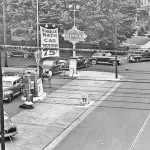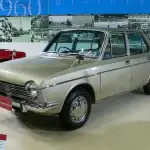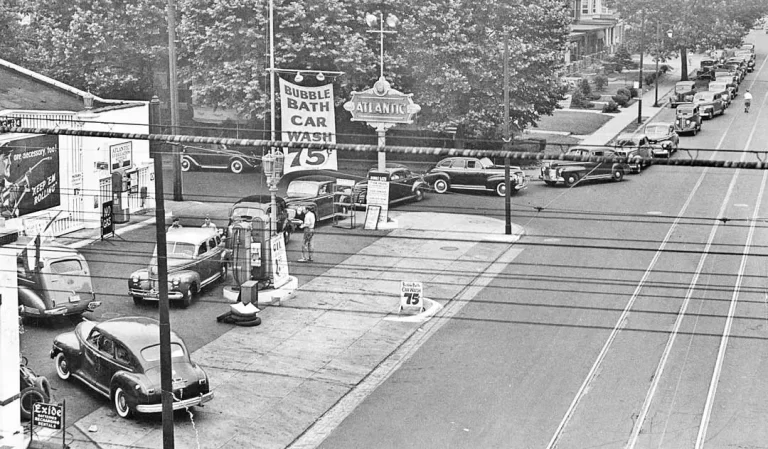
With how easy it is to ship a vehicle in today’s world, have you ever wondered how it all started? Below we’ll go into the history of vehicle creation, railroad transportation and how vehicles are shipped today. Ready to learn everything you need to know about auto transport companies? Let’s get started.
When Were Cars Invented?
Before vehicles needed to be transported, the first car had to be invented. You may think that Henry Ford was responsible for creating the first car, but that glory goes to Nicholas Cugnot.
In 1771, Nicholas Cugnot invented the first vehicle that was powered by steam and was built for French War Minister. Sadly, this vehicle went fairly slow (slower than 2.5 miles an hour) and wasn’t easy to operate.
In 1873, Amedee Bollee of France invented the steam car. It could carry 12 people but was not practical and horses were preferred to carry people around as it was faster. Around the 1900s, Germany decided it was time to bring gasoline into the equation.
This time, it started to make sense as it could reach around 10 miles per hour and could go faster than a typical horse and buggy. With the help of Henry Ford’s assembly line and the Model T Ford, vehicles started to become common and thus auto transportation companies became necessary.
Bi-Level / Tri-Level Railroad Transportation
With vehicles being mass-produced, many places around the world were willing to purchase a vehicle but had no way to get to where the vehicles were being produced. With this new problem introduced into the world, Volkswagen started to look into the problem.
With the help of the German railroads, they invented a flat car that could carry ten vehicles at once. This design was introduced in 1954 and allowed for newly built vehicles to be transported to wherever the railroads would go.
With the added pressure to figure out how to transport more cars as the demand increased, bi-level racks started to be introduced, which were mounted on 42-foot flatcars. Since this was so popular, they began to introduce full-sized tri-level racks that could carry 12 cars at once.
Cargo Ships

With time moving forward, by the 1960s, cargo ships started to become a viable way to ship vehicles. Not only could these ships move overseas, but they could also carry a large number of cars.
Cargo ships are now explicitly made to ship vehicles, like the MK-V ships of Wallenius Wilhelmsen. These ships are constructed by Wallenius Wilhelmsen from Norway, created by Mitsubishi Heavy. These ships are called roll on/roll-off, which like the name, implies that things roll onto them, and roll off.
Without having to implore a crane, the internal storage can be used to accommodate as much as 450 tonnes of cargo, just on the outer ramp. With so many vehicles being made today, and needed to get to all countries in the world, it’s amazing how the industry has evolved.
Today’s Normal Automobile Shipping
If you look around on any highway or interstate, you’re likely to see many different leading car shipping hauling 10 or more vehicles at once on the road. With vehicle transportation being an affordable service, it can make sense even for a commonplace person to ship their vehicle. Compared to the 1940s where you would have had to rely on railroads!
With companies being able to batch together many vehicles at once, this means that transportation is no longer a luxury good, but a standard that everyone can enjoy for a low cost. As self-driving vehicles become more commonplace, it may even become a reality that people enjoy even lower costs as it takes the drivers out of the equation, thus leading to even lower prices.
Nowadays you can even ship your vehicle the next day with air transport and have your vehicle waiting at your destination. With how easy everything is nowadays, we should always look back and see how far the car shipping industry has come and appreciate what we have available for us in today’s market.
Conclusion
In conclusion, the invention and evolution of cars and the subsequent need for car transportation have transformed the way we travel and have become an integral part of modern society. From the humble beginnings of Nicholas Cugnot’s steam-powered vehicle to the mass production of automobiles pioneered by Henry Ford, the automotive industry has made significant strides.
Today, car shipping has become a commonplace service, accessible to individuals from all walks of life. The sight of car carriers on highways is a testament to the affordability and convenience of vehicle transportation. As self-driving technology advances, we can anticipate even greater cost savings in the future.
The car shipping industry has come a long way, and it is important to recognize and appreciate the progress made. With the convenience of air transport, vehicles can now be delivered to their destinations in record time. As we reflect on the remarkable advancements achieved, we should also remain excited about the possibilities that lie ahead in this ever-evolving market.

















